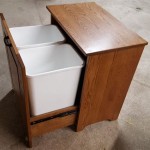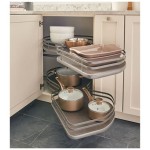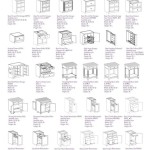How To Paint Over Already Painted Cabinets
Painting kitchen cabinets is a cost-effective way to refresh the appearance of a kitchen without undergoing a complete remodel. Painting over already painted cabinets, while seemingly straightforward, requires careful preparation and execution to achieve a durable, professional-looking finish. This article provides a detailed guide on how to paint over already painted cabinets, outlining essential steps, materials, and techniques.
Assessing the Existing Cabinet Condition and Paint
Before commencing any painting project, a thorough assessment of the existing cabinets and paint is crucial. This evaluation will determine the necessary preparation steps and the appropriate materials. Several factors need careful consideration:
Paint Condition: Examine the existing paint for signs of damage, such as chipping, peeling, cracking, or bubbling. Minor imperfections can often be addressed with patching and sanding. However, extensively damaged paint may necessitate complete removal, which is a more time-consuming and labor-intensive process.
Paint Type: Identifying the existing paint type is essential for compatibility with the new paint. Latex paint can generally be applied over oil-based paint with proper preparation. However, applying oil-based paint over latex paint is not recommended, as it can lead to adhesion problems. A simple test involves rubbing a small area of the painted surface with a cotton ball soaked in denatured alcohol. If the paint softens or comes off, it is likely latex. If it remains intact, it is likely oil-based.
Cabinet Material: The material of the cabinets (wood, laminate, or metal) will influence the choice of primer and paint. Wood cabinets are generally the easiest to paint, while laminate and metal cabinets require specialized primers that promote adhesion to smooth, non-porous surfaces.
Hardware: Assess the condition of the cabinet hardware (knobs, pulls, hinges). Decide whether to clean and reuse the existing hardware, replace it, or temporarily remove it during the painting process. If replacing, ensure the new hardware matches the existing hole pattern or that the holes can be filled and redrilled.
Preparing the Cabinets for Painting
Proper preparation is paramount to a successful paint job. Insufficient preparation can lead to poor adhesion, an uneven finish, and premature paint failure. The preparation process involves cleaning, sanding, patching, and priming.
Cleaning: Thoroughly clean the cabinets to remove grease, dirt, and grime. Use a degreasing cleaner, such as trisodium phosphate (TSP) or a TSP substitute, following the manufacturer's instructions. Rinse the cabinets with clean water and allow them to dry completely. This step is critical for ensuring proper adhesion of the primer and paint.
Sanding: Sand the cabinets to create a slightly rough surface that the primer can grip. Use medium-grit sandpaper (120-180 grit) to lightly sand the entire surface of the cabinets. Focus on areas with imperfections or glossy paint finishes. For detailed areas and corners, use a sanding sponge or a detail sander. After sanding, remove the sanding dust with a tack cloth or a damp rag. Remember to wear a dust mask during sanding to protect yourself from inhaling harmful particles.
Patching: Fill any holes, cracks, or dents with wood filler or spackle. Apply the filler evenly and allow it to dry completely according to the manufacturer's instructions. Once dry, sand the patched areas smooth with fine-grit sandpaper (220 grit) to blend them seamlessly with the surrounding surface.
Priming: Apply a coat of high-quality primer to the cabinets. Primer serves several important functions: it seals the existing paint, provides a uniform surface for the new paint, and improves adhesion. Choose a primer that is compatible with the cabinet material and the existing and new paint types. For cabinets with difficult-to-adhere-to surfaces, such as laminate or metal, use an adhesion-promoting primer. Apply the primer in thin, even coats using a brush, roller, or sprayer. Allow the primer to dry completely before proceeding to the next step. Consider lightly sanding the primed surface with fine-grit sandpaper (220 grit) to remove any imperfections and create an even smoother surface for painting. Remove the sanding dust with a tack cloth.
Painting the Cabinets
Once the cabinets are properly prepared, the painting process can begin. Select a high-quality paint formulated for cabinets, typically a durable acrylic or alkyd enamel. Consider the desired sheen level, with semi-gloss or gloss finishes being common choices for cabinets due to their durability and ease of cleaning.
Paint Application: Apply the paint in thin, even coats using a brush, roller, or sprayer. Brushes are best for detailed areas and corners, while rollers are ideal for covering large, flat surfaces. Sprayers provide the smoothest, most professional-looking finish, but they require more skill and preparation to use effectively. When using a brush or roller, avoid applying too much paint at once, as this can lead to drips and runs. Maintain a wet edge to prevent lap marks. If using a sprayer, maintain a consistent distance from the surface and overlap each pass slightly.
Curing Time: Allow the first coat of paint to dry completely before applying the second coat. Drying times vary depending on the paint type and environmental conditions. Consult the paint manufacturer's instructions for recommended drying times. After the first coat is dry, lightly sand the surface with fine-grit sandpaper (220 grit) to remove any imperfections and improve adhesion for the second coat. Remove the sanding dust with a tack cloth.
Second Coat: Apply a second coat of paint using the same techniques as the first coat. This coat will enhance the color, improve coverage, and increase the paint's durability. Allow the second coat to dry completely before reassembling the cabinets.
Reassembly: Once the paint is fully cured according to the manufacturer’s instructions, reassemble the cabinets. This involves reinstalling the hardware (knobs, pulls, hinges) and reattaching the doors and drawers to the cabinet frames. Use care when handling the freshly painted surfaces to avoid scratching or damaging the paint. If the hardware was replaced, ensure the new hardware is securely attached.
Additional Considerations for Specific Cabinet Materials
While the general steps for painting over already painted cabinets remain largely the same, certain modifications may be necessary depending on the cabinet material. These considerations are crucial for ensuring optimal adhesion and a long-lasting finish.
Wood Cabinets: Wood cabinets are generally the easiest to paint. Ensure the wood is properly sanded and primed to create a smooth, even surface. For stained wood cabinets, consider using a stain-blocking primer to prevent the stain from bleeding through the paint. Choose a high-quality paint that is specifically designed for wood surfaces.
Laminate Cabinets: Laminate cabinets have a smooth, non-porous surface that can be challenging to paint. Use an adhesion-promoting primer specifically formulated for laminate surfaces. Lightly sand the laminate surface with fine-grit sandpaper (220 grit) before applying the primer to further improve adhesion. Choose a durable paint that is resistant to chipping and scratching.
Metal Cabinets: Metal cabinets also require special preparation to ensure proper paint adhesion. Clean the metal surface thoroughly to remove any rust or corrosion. Apply a rust-inhibiting primer specifically designed for metal surfaces. Lightly sand the primed surface with fine-grit sandpaper (220 grit) before painting. Choose a paint that is compatible with metal, such as an epoxy or acrylic enamel.
Essential Tools and Materials
Having the right tools and materials on hand will significantly streamline the painting process and improve the overall quality of the finished product. Essential tools and materials include:
- Degreasing cleaner (TSP or TSP substitute)
- Medium-grit sandpaper (120-180 grit)
- Fine-grit sandpaper (220 grit)
- Sanding sponge or detail sander
- Wood filler or spackle
- Tack cloth or damp rag
- High-quality primer
- High-quality paint formulated for cabinets
- Paintbrushes (various sizes)
- Paint rollers (various sizes)
- Paint sprayer (optional)
- Paint trays and liners
- Painter's tape
- Drop cloths
- Screwdriver or drill for removing hardware
- Safety glasses
- Dust mask
- Gloves
Troubleshooting Common Painting Problems
Even with careful preparation and execution, some common painting problems may arise. Understanding how to troubleshoot these issues is crucial for achieving a professional-looking finish.
Paint Runs and Drips: Paint runs and drips occur when too much paint is applied to a surface at once. To fix runs and drips, allow the paint to dry completely. Then, sand the affected area smooth with fine-grit sandpaper (220 grit). Clean the sanding dust and apply a thin coat of paint to the area.
Brush Strokes: Brush strokes can be minimized by using high-quality brushes and applying the paint in thin, even coats. Consider using a paint conditioner to improve the flow and leveling of the paint. If brush strokes are still visible, lightly sand the surface with fine-grit sandpaper (220 grit) after the paint has dried and apply another thin coat of paint.
Poor Adhesion: Poor adhesion is often caused by inadequate surface preparation or using the wrong type of primer. Ensure the surface is thoroughly cleaned, sanded, and primed before painting. Use an adhesion-promoting primer for difficult-to-adhere-to surfaces. If the paint is already peeling, remove the loose paint, sand the surface, and reprime before painting.
Uneven Coverage: Uneven coverage can be caused by applying the paint too thinly or using a low-quality paint. Apply the paint in multiple thin coats, allowing each coat to dry completely before applying the next. Use a high-quality paint with good hiding power.

Avoid These Mistakes How To Paint Cabinets That Are Already Painted Grace In My Space

Best Practices For Painting Over Painted Cabinets The Morris Mansion

Avoid These Mistakes How To Paint Cabinets That Are Already Painted Grace In My Space

How To Repaint Painted Cabinets

How To Paint Kitchen Cabinets From A Diyer Who Has Done It 3 Times

The Best Way To Paint Kitchen Cabinets No Sanding Palette Muse

Painted Kitchen Cabinets One Year Later The Palette Muse

How To Paint Kitchen Cabinets A Step By Guide Confessions Of Serial Do It Yourselfer

How To Paint Kitchen Cabinets The Love Notes Blog

How To Paint Veneer Cabinets For A Long Lasting Finish Anika S Diy Life
Related Posts








